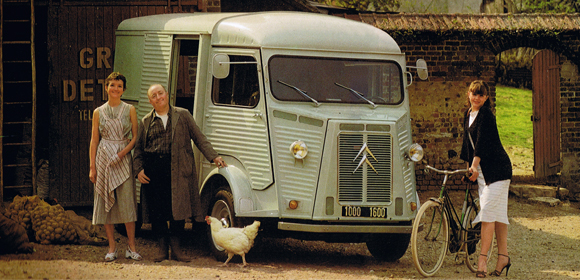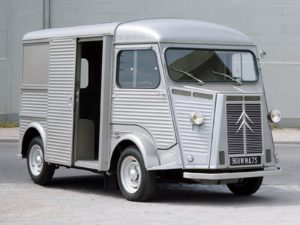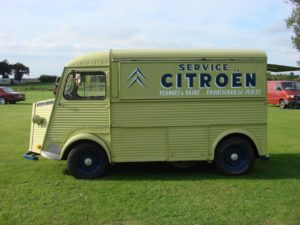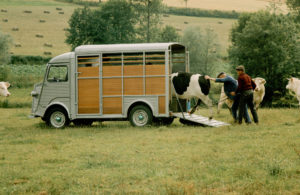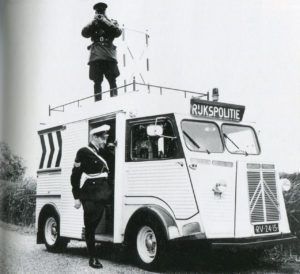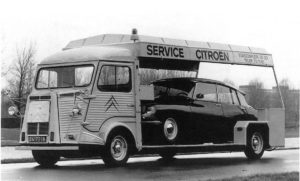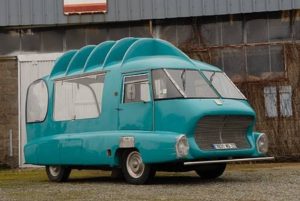The Citroën Type H made its world premiere exactly 70 years ago at the Paris Automobile Salon 1947. Its recipe for success was typical of the post-war period: simple design, robust technology, reduction to the essentials and its versatility made the front-wheel-driven utility van a “cash cow”. Whether being used as a rolling sales van, mobile home or fire engine – the creativity of Type H coachbuilds were nearly unlimited. Up to the discontinuation of production in 1981, about 483.000 vehicles were built.
In June 1948 the commercialization began of the front-wheel-driven van with the characteristic corrugated body in the style of the legendary “Junkers JU 52”. Depending on the permissible load, different types (H, HY, HX, HW, HZ and 1600) were developed over time.
Numerous coachbuilders, including several based in Germany, provided a wide variety of variations of the Type H. The various extensions of the wheelbase and overhang were baptized as “Modification A” (with a 40 centimeter overhang) to “Modification F” (with a 1.2 meter wheelbase extension and 60 centimeter overhang). Roof elevation extensions of 10, 20 or 40 centimeters were possible. In addition, the customer had the option of additionally increasing the height of the curved roof over the driver area.
The torsion-bar suspension provided the Type H with high suspension comfort when unladen as well as good road holding in general. The deep entry of the flat loader space and the U-shaped reinforced frame enabled the team led by engineer Pierre Franchiset and designer André Lefèbvre to build a variety of coachbuilds: body extensions, high roofs, flatbeds with double cabins and much more. Default delivery from the factory was also a variant without any coachbuild, just a van with a length of 4.28 meters and a chassis with a driver’s cab.
Several variants of the Citroën Type H were developed for public services, for example as a vehicle of fire brigades, postal and police services. The range of coachbuilds was mainly aimed at medium-sized companies.
The Citroën Type H was also used as a flat wagon (also with double cabin), vehicle transporters, low floor trolleys, sales cars, buses, refrigerator vans, camper vans, animal transports, funeral trolleys and even as a rolling laboratory. In addition, in some variants the hydropneumatic suspension of the DS was installed on the rear axle.
The Citroën Type H had the engine and gearbox of the Traction Avant and later the DS – but installed “backwards”, i.e. with the engine in front of the gearbox – and with opposite (right) motor rotation. Diesel engines from Perkins and Indénoor were also offered.
A total of 483,308 Type H vehicles were built in France (at Quai de Javel / Aulnay-Sous-Bois), Belgium (Forest – 5,343 vehicles) and the Netherlands (about 10,000 vehicles) until December 14, 1981.
We’d like to thank Citroën Germany for providing this info.
